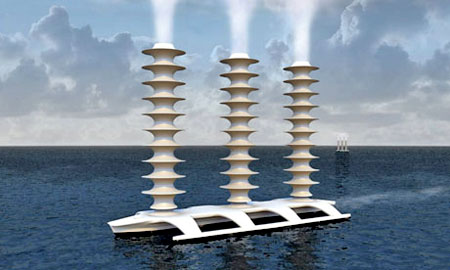Geoengineering schemes are projects designed to tackle the effects of climate change directly, usually by removing CO2 from the air or limiting the amount of sunlight reaching the planet's surface.
Although large-scale geoengineering is still at the concept stage, advocates claim that it may eventually become essential if the world wants to avoid the worst effects of climate change.
Critics, by contrast, claim that geoengineering isn't realistic - and may be a distraction from reducing emissions.
The first category of scheme - those designed to remove CO2 from the air - include, machines (sometimes called "artificial trees") that pull the gas from the atmosphere using plastic polymers.
Other proposals seek to increase the amount of CO2 absorbed by the oceans - for example by adding large quantities of lime to the water.
Other related schemes - sometimes but not always described as geo-engineering - involve harnessing the capacity of trees and plants to absorb CO2 from the air.
These include,
burning large quantities of wood in power plants with carbon-capture technology
making and burying large amounts of charcoal to lock carbon into the soils
grazing cattle in a way designed to turn grasslands into giant carbon sinks
In the second category - schemes designed to reduce the amount of sunlight reaching Earth - proposals include,
firing sulphate aerosols into the stratosphere to reflect sunlight back to space
using unmanned ships to increase above-ocean cloud cover by spraying sea water into the air
painting the world's roofs white to increase reflectivity
floating thousands of tiny mirrors in space between Earth and the sun
Some geoengineering schemes, such as adding aerosols to the stratosphere, have attracted heavy criticism for their possible side effects.
Even if these side-effects weren't severe, schemes that "mask" the temperature rise rather than removing the CO2 come with some serious disadvantages, such as the fact that they don't deal with CO2's other major impact: ocean acidification.
Administering any such scheme would also raise obvious issues of geopolitics and global governance.
Other schemes, such as the machines designed to suck CO2 directly out of the air, are far less controversial, since all they aim to do is remove a pollutant that humans are adding to the air.
The main challenges in this case are reducing manufacturing and running costs to make the devices commercially viable, and finding reliable and inexpensive ways to store the captured gas.

